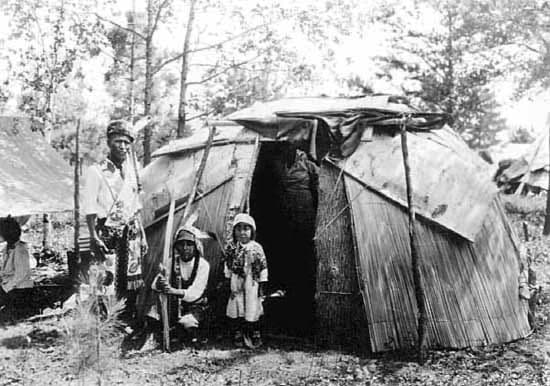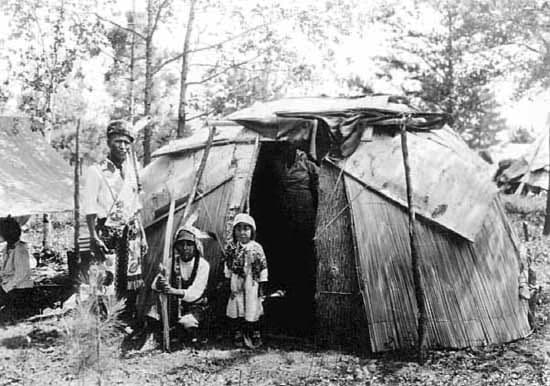The Chippewa tribe, or Ojibwe Indians, is one of North America’s largest American Indian tribal groups. This tribe has a glorious history and an exciting culture. Some people believe that they were the most powerful group in the Great Lakes area.
Are you interested to learn more about the Chippewa tribe? Read on as this article discusses some critical Chippewa tribe facts, history, and culture!

About The Chippewa Tribe
The Chippewa tribe has about 150 bands in the United States. As of 2010, the total population of the tribe is 170,742. The tribe were exceptional fur trappers and also trapped beavers for trading.
The Chippewa tribe speaks the Algonquian language. Initially, the tribe was known as Ojibwe. This name was later corrupted by English and changed to “Chippewa.” The French referred to them as Saulteurs or Sautuex, which means “People of the Falls.”
Weapons
The primary weapons of the Chippewa tribe were bows and arrows. They also adopted various clubs like hatchet axes, knives and lances, Bird Head clubs, and spears. With the arrival of the traders from Europe, they also added rifles to their list of weapons.
Food
The food habits of the Chippewa tribe were based on the availability of natural resources in the regions. Usually, they fed on fishes, squirrels, deers, beavers, raccoons, and bears.
The tribe also consumed pumpkin, corn, beans, and squash.
Those who predominantly resided in the Great Plains relied on buffaloes for their meals. Sometimes, the people also hunted wild turkeys, bears, and deer. Roots, veggies, and wild fruits were also a part of their diet.
Chippewa Tribe History
According to birch bark scrolls and oral history, the tribe originated from the Atlantic Coast. This tribe was exposed to the non-Indians during the 1600s when the tribe successfully established cordial relations with the French.
The Chippewa tribe’s history includes many bravely fought wars and victories. They have been living in North America’s western part for a long time.
Chippewa also fought in the Revolutionary War against the British Colonies. After land sessions in 1815, many tribal members migrated to other regions. It was in 1860 when they were removed to the Oklahoma Indian Territory. The tribe relocated to the northeastern section of Oklahoma until the 1900s.
Chippewa tribe history shows that the tribe had to join Cherokee in northeastern Oklahoma forcefully. The tribe was assigned to Turtle Mountain Reservation in 1882. Afterward, the tribe was reassigned to Montana’s Rocky Boy’s reservation in the 1980s with the Cree tribe.
Though they were a friendly group, they fought continuously until the 1825 treaty. After the treaty was signed, the Chippewa’s received a significant portion of northern Minnesota, and Sioux received southern Minnesota.
Some of the other wars fought by the tribe were the Battle of Wabash, Little Turtle’s war, French-Indian War, King George’s War, and many more.
In the current day, most Chippewa’s are of mixed heritage. They are mostly native English and French. Many live in the United States and Canada.
Chippewa Tribe Facts
Here are some Chippewa tribe facts that many will find interesting:
- The Chippewa tribe also calls themselves Anishinabe, which means “first man” or “original man.”
- They reside in the Northern American region. Their main areas are Minnesota, Michigan, North Dakota, and Wisconsin.
- This tribe uses a birch-bark for many of their necessities. However, they are more famous for their graceful and magnificent birch-bark canoes. These canoes can carry large and can hold a massive amount of weight.
- Apart from catching different types of fishes, they also catch frogs, turtles, and crayfish.
- Chippewa tribe crafts beauty items. They also carve items like wampum, baskets, moccasins, and snowshoes for more practical use. They specialize in intricate bead crafting and dream catchers.
- The woodland Chippewa reside in wigwams. Wigwams are houses made of birch-bark.
- Those who live in the Great Plains area live in tipis. Tipis use animal hides, which complement the Chippewa’s nomadic lifestyle.
- Because the Chippewa tribe has so many bands, they relied on each other for trading items. This tribe was also close to the Ottawa and Potawatomi tribes. All these three tribes were collectively called The Council of Three Fires.
- They did not get along well with the Iroquois and Sioux tribes.
- After the arrival of the English and French settlers, the tribe actively participated in fur-trading.
- Mixed Chippewas are known as Metis (may-tee). The Metis people follow a mix of European and Indian traditions. Metis people were known as fur traders and bison hunters.
A look Into Chippewa Tribe’s Culture
The Chippewa tribe’s culture has undergone evolution throughout these years. Now, the tribe welcomes and allows both a female and male to contest as the chief of the tribe. In the earlier times, this tribe followed a traditional Woodlands culture.
Most Chippewa’s tribe members were hunter-gatherers.
They harvested maple sugar and wild rice for their staples. Most of their diet came from fishing. Interestingly, the tribe also domesticated dogs like the rest of the world.
In terms of clothing, the Chippewa tribe wore clothes with intricate and beautiful beadwork. They wore accessories such as gloves and cuffs, bags, belts and bands, fans, and canes. During the winters, they would resort to warm cloaks, leggings, and moccasins.
The tribe also followed a seasonal subsistence economy. The people resorted to fishing in the summers, and during the fall, they used to harvest wild rice. Ice fishing, tapping maple syrup, and hunting were the winter activities of the Chippewa tribe.
Chippewa Tribe Facts Resources
Native American Tribes: The History and Culture of the Chippewa
History – Saginaw Chippewa Indian Tribe
- Tulip Mania – The Story of One of History’s Worst Financial Bubbles - May 15, 2022
- The True Story of Rapunzel - February 22, 2022
- The Blue Fugates: A Kentucky Family Born with Blue Skin - August 17, 2021
